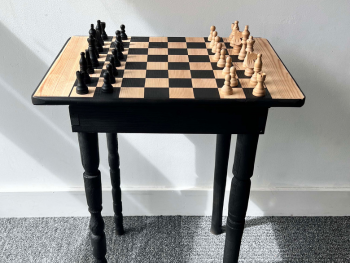Expert comment Last updated 05 September 2024

This month marks Second Hand September, a campaign to encourage people to buy pre-owned for 30 days to help our wallets and the planet, and this week we’re looking at furniture.
With homeware giants such as IKEA now launching their own second-hand marketplace, Jason Nicholson, Course Director of BA Product and Furniture Design at Birmingham City University, has these top tips for getting the best deals.
“Every designer should design and create with sustainability in mind,” said Mr Nicholson. “Design should conserve resources and minimise physical and visual pollution throughout the lifecycle of the product. ‘Up-cycling’ or ‘Repurposing’ creates opportunities to design with upgradability, expansion, or reconfiguration in mind.”
“I love Vintage furniture, particularly Mid-Century Modern. It’s often made of high-quality hardwoods like oak and teak, known for their durability and can last you years. Keep an eye out for labels, badges and stamps from renowned manufacturers such as Nathan, G-Plan or McIntosh which signal good design and construction.
“Do some research into particular brands and design styles. This will help you recognise good quality and find pieces to complement your existing décor or align with your vision.
“Don’t be afraid to get creative. You may want to ‘harvest’ materials from a piece of furniture to create something new or paint over elements to suit your home. First-year students on our BA Product and Furniture Design course undertake a re-purposing project. They’ve created amazing work, including a chess table from a chest of drawers (pictured) and a coat stand from a wooden ‘Connect 4’ game.
“Make sure your furniture is going to last you, check that the joints are secure and the furniture is stable. Moving parts should function properly, especially drawers and doors. Missing screws and bolts can be a red flag.
“Don’t worry too much about light surface stains or minor scratches, these can often be easily sanded out or refinished. Any deeper damage or structural issues might be harder to repair. Check for any edging or seams indicating a veneer, meaning it won’t be solid wood.
“Lastly, always bring a tape measure! Check the space you have available and all the dimensions of the piece you want. The worst thing is to fall in love with a high-quality, great-deal furniture item and find that it doesn’t fit!”